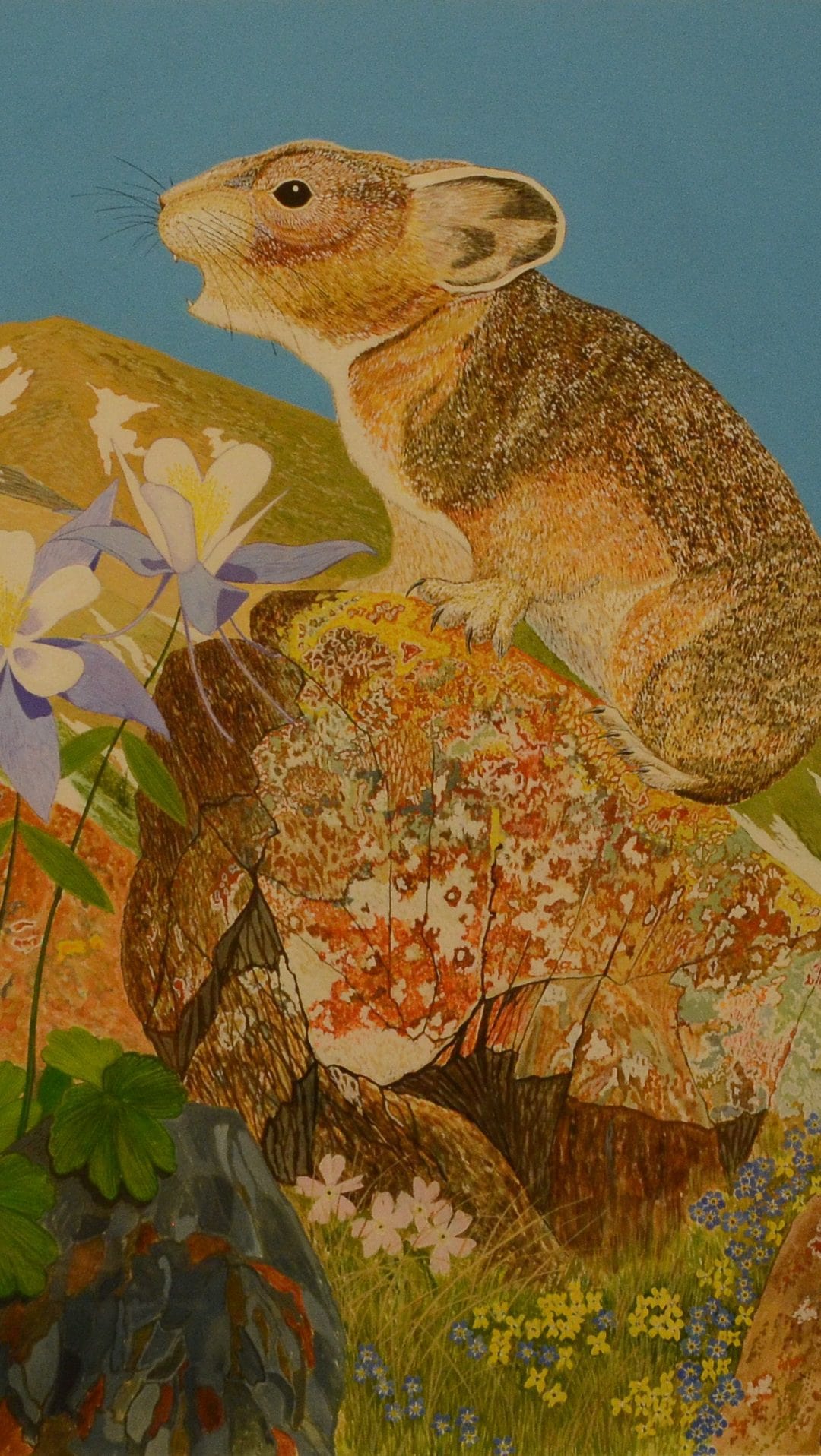“More Beautiful and Amazing” Seton Gallery exhibition 2019-2020
I invited Bob Hare to show a gouache on paper in the 2019-2020 exhibition at the Academy for the Love of Learning, “More Beautiful and Amazing.” I have included his words directly below, followed with a comment by Seton. Bob writes about his adventures in Yosemite National Park and elsewhere in the Sierra Nevada.
Bob Hare Statement About the Pika
After spotting a pika on a climb up Wheeler Peak with my friend David Witt in 1977, I painted this pika for the cover of New Mexico Wildlife Magazine. While resting from the steep climb above Williams Lake, we heard the call of this wee alpine sprite, or shall I say alpine spirit. For the pika represents for me the very spirit of the exposed mountaintop islands that float above the forests and valleys below. This cute cousin of the hare family lives year-round in this often cold, windy, and snow-covered habitat finding safety in the rocks and feeding on the succulent low-growing plants. On sunny days of the brief alpine summer the pika scampers about harvesting grasses and carefully arranging them on the rocks to cure. Then the pika squirrels away this “hay” in their winter retreats under the rocks to live on during the long dark months of winter.
But our pika friends are greatly threatened by Global Warming because they depend on their tundra-like alpine conditions to survive and as the climate warms this arctic-like habitat zone will move upward on the mountains—eventually disappearing altogether except on the very highest mountains of North America. Since Mount Wheeler is New Mexico’s highest mountain and we saw this pika just 1,000 feet below the summit, the last New Mexico pika could find itself trapped on the summit with nowhere to go and no habitat left if we do not reverse Global Warming.
I don’t want to live in a world without the call of the pika. Do you?
Ernest Thompson Seton Statement About the Pika
Following the trail of a Coney that bleated derisively at me, I began at once to roll rocks aside in an effort to follow him home to his den. When about ten tons of rock had been removed, I was baffled. There were half a dozen possible lines of continuation, and while I paused to wipe the “honest sweat” from my well-meaning brow, I heard behind me the “weak, weak,” of my friend, as though giving his estimate of my resolution. (Lives of Game Animals, Vol. IV, pg. 646, 1928)
(“Pika” copyright, Bob Hare. Used by permission.)

